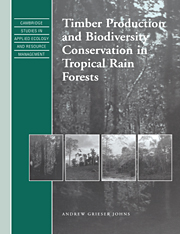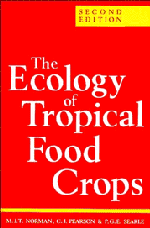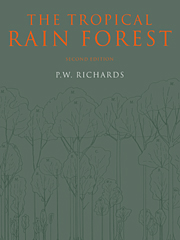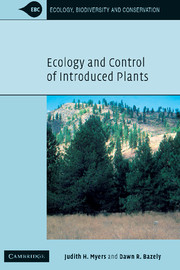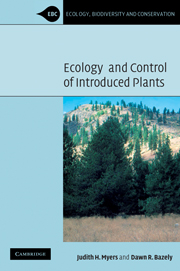Timber Production and Biodiversity Conservation in Tropical Rain Forests
Timber production is often the most economic form of land use in areas of tropical forest: forest preservation is rarely so. The area of tropical forest reserved for timber production exceeds that of National Parks and other preserved areas by a ratio of at least 8:1. Although often poorly managed to date, production forests have the potential to support a high percentage of natural forest biodiversity. They have a vital role to play in conservation strategies. This book attempts to bridge the current gap between conservation requirements and commercial interests, indicating the possibilities for integrated management of tropical forests. The aim is to develop a justification and practical approach for the management of production forest as a supplement to totally-protected forest in the conservation of tropical biodiversity.
- Advocates pragmatic strategies for tropical rain forests which balance conservation needs with sensible commercial exploitation
- Improved forests management will protect biodiversity while creating income and jobs for the indigenous population
- Recommends strategies that will allow sustainable use of resources
Reviews & endorsements
'… of great interest to people with an interest in tropical forest management and conservation.' Michelle A. Pinard, Commonwealth Forestry Review
Product details
August 2004Paperback
9780521607629
248 pages
247 × 190 × 14 mm
0.467kg
23 b/w illus. 41 tables
Available
Table of Contents
- Foreword Jeffrey Burley
- Preface
- Explanatory note
- 1.The issues
- 2. The history and development of tropical forestry
- 3. Changes in the physical environment
- 4. Forest regeneration and gap dynamics
- 5. Responses of individual animal species
- 6. Responses of species assemblages
- 7. Using ecological data in forest management planning
- 8. Intervention to maintain biodiversity
- 9. Field procedures
- 10. The future
- Bibliography
- Index.

